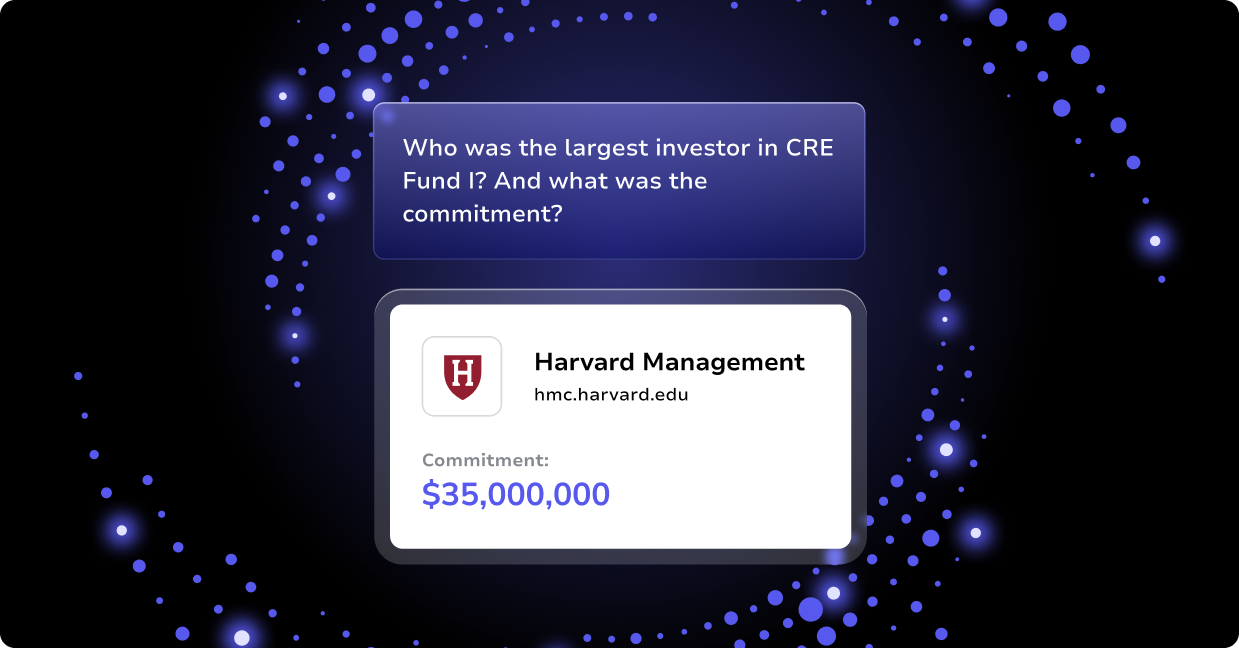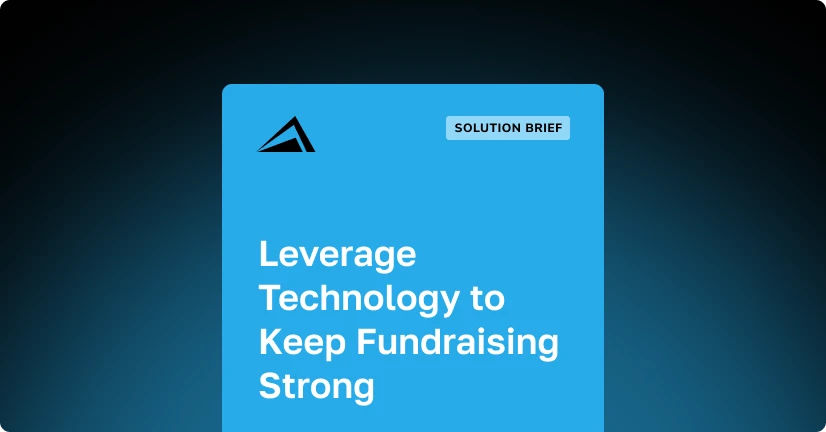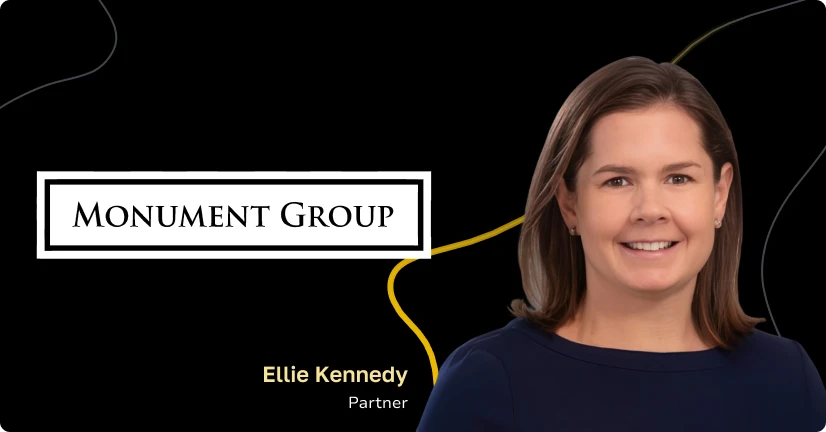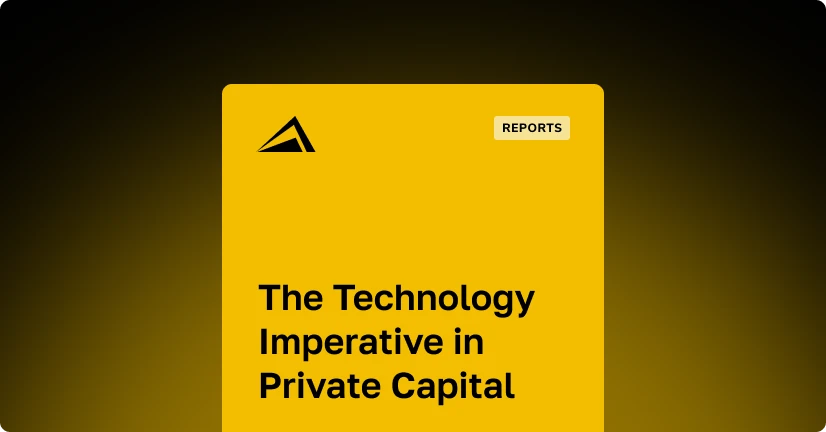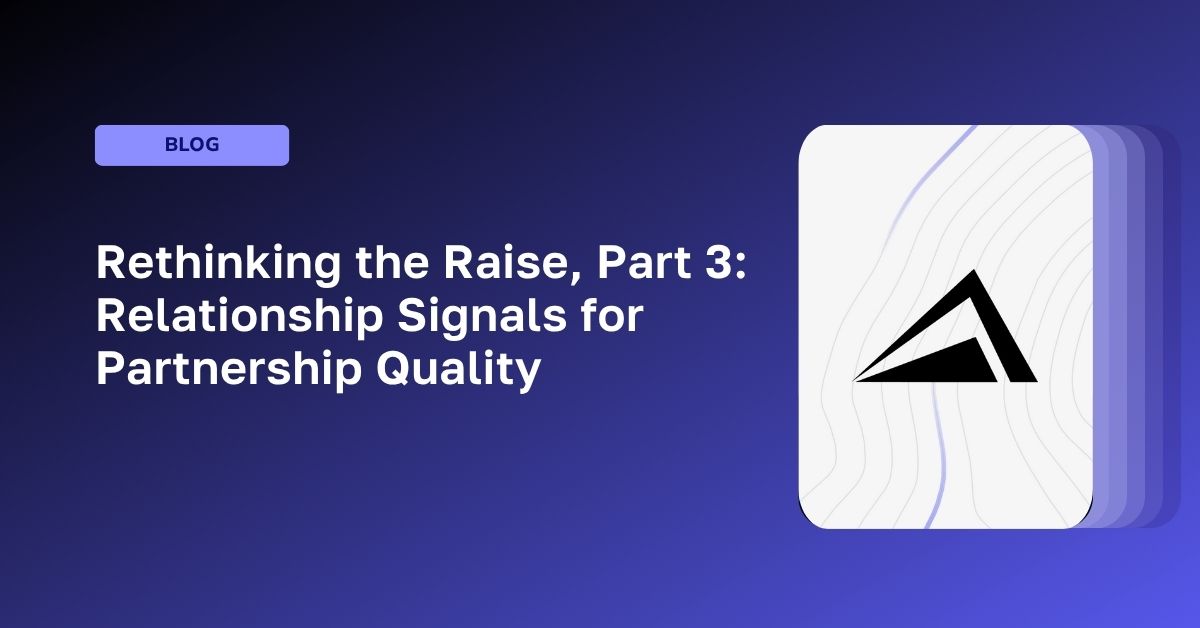Strong communication gets LPs engaged. What keeps them moving forward are the relationship signals that predict post-close partnership quality—how feedback is processed, context preserved, and coordination maintained across teams.
That scrutiny is only intensifying. Distributions to paid-in capital now carry a priority weighting 2.5 times higher than in 2022 (McKinsey, 2025). LPs are managing more capital with fewer people while GPs stretch lean teams across global pipelines. In this environment, how a GP shows up under pressure signals what partnership will actually feel like.
This installment in the Rethinking the Raise series explores the fourth pillar of effective fundraising: relationship intelligence, the discipline of turning every interaction into shared context and coordinated execution.
Relationship Craft: Beyond the Investor List
Maintaining momentum means prioritizing behavioral signals over static criteria. Instead of relying solely on firm size or geography, leading GPs segment by allocation timing, co-investment appetite, email engagement, portal activity, response specificity, and meeting progression. Purpose-built systems track which LPs schedule follow-ups quickly, respond with detailed questions, and advance through internal stages.
Fundraising timelines are stretching, yet a subset of managers still closed in under six months with “one-and-done” processes (Preqin, 2025). Early behavioral tracking consistently shows up among faster closers.
This intelligence sharpens first meetings. Referencing a prospect’s portal activity or document downloads shifts the conversation from generic pitch to partnership dialogue.
The key is infrastructure: integrated systems that automatically capture interaction data across team members, preserving context that would otherwise sit in inboxes or disappear during transitions.
Processing Feedback as Relationship Intelligence
When an LP flags an issue, such as ambiguity in a key-person clause, the response reveals more than attentiveness. It reflects how the firm coordinates under pressure.
LPs want partners who act decisively, communicate clearly, and stay aligned across functions. A concise, well-informed reply signals that readiness:
“Appreciate the flag. After review with counsel and partners, we’ve tightened the clause to cover any two of the three named individuals. Revised language is uploaded to your data room.”
The fix matters—but how it’s delivered matters more. Feedback becomes a test of execution.
Missteps like inconsistent messaging, delayed follow-up, or unclear ownership expose internal gaps. LPs begin to question whether coordination will hold once capital is committed.
It’s not just about responsiveness. The firms that build momentum recognize patterns across conversations and act on them. When several LPs raise the same concern, it’s not just a comment—it’s guidance:
“Based on market feedback, we’ve refined our key-person clause to clarify succession planning.”
Failing to act forces LPs to carry unresolved issues into committee meetings, slowing progress and undermining trust.
Feedback isn’t a task to clear. It’s an opportunity to demonstrate alignment, adaptability, and follow-through.
SIDEBAR: 24-Hour Response Best Practices
- Acknowledge receipt: within 2 hours
- Initial response: within 24 hours
- Full resolution: within 48 hours
Pro tip: Set up automated status updates to preserve momentum during internal coordination.
Institutional Memory As Competitive Advantage
Institutional memory is built through repeatable workflows: logging action items, tracking insights, and ensuring team-wide access to relationship context. The goal is clarity—everyone knows where information lives, who owns it, and how it resurfaces during critical LP interactions.
Capturing What Matters Across the Team
True institutional memory isn’t built on software; it’s driven by a firm-wide culture that demands rigorous data hygiene. This means key touchpoints—call notes, open items, and engagement signals—are logged consistently across IR, deal teams, and finance, without exception.
When this discipline holds, teams act with precision. Junior staff can recall an LP’s ESG stance from a prior call. Partners enter meetings already aligned on timelines. Most importantly, LPs experience seamless continuity, not frustrating repetition.
Turning Context into Operational Leverage
When CRMs and workflow tools are kept current and used actively—not treated as passive storage—relationship knowledge becomes a performance driver. Logged details sharpen follow-ups, strengthen positioning, and accelerate coordination. Teams avoid redundant research, stop repeating questions, and hand off relationships smoothly. The result is systematic discipline LPs notice.
Maintaining Continuity Through Change
As teams evolve, institutional memory safeguards consistency. Turnover, regional expansion, and limited IR capacity can all create gaps. But when context lives in structured systems—not inboxes or notebooks—coverage stays intact. A new IR manager can step in, access full history, and continue conversations without disruption.
Spotting When Memory Breaks Down
When institutional knowledge breaks down, symptoms show quickly. LPs start using side channels. Responses slow. Conversations lose depth. These are early signs of eroding trust. Preserving memory isn’t just an efficiency play—it shortens cycles, protects hard-won relationships, and signals the operating quality LPs value.
Value Creation Between Meetings
Every GP-LP interaction, not just meetings, can reinforce trust or erode it. Relevance is what cuts through.
Delivering Targeted, Useful Outreach
While most CRMs can track basic email opens and clicks, purpose-built fundraising platforms capture the context that matters most to LP relationships. When your CRM connects directly to your data room, teams can see not just that an LP opened a document, but which specific sections they reviewed, how long they spent on financial statements versus marketing materials, and how their engagement patterns compare to other committed LPs.
This contextual intelligence allows teams to prioritize what to share and when—aligning communication with actual interest rather than defaulting to generic updates.
That’s how communication becomes value.
Examples of Targeted Outreach:
- Market insight: “Saw you reviewed the sector update. Page 3 includes benchmarks for your IC meeting.”
- Process support: “Here’s the allocation timeline template for your Q3 review.”
- Deal alert: “Co-investment opportunity in your target sector is coming up.”
Targeted outreach positions the fund as a thoughtful, informed partner. It shortens the path to decision and reduces friction in the LP’s own internal process.
Reinforcing Trust Through Consistent Follow-Up
When messages build on each other, LPs see a team that listens, tracks, and responds with precision. Follow-ups avoid backtracking and show continuity without overcommunication.
When context is respected and timing is right, consistency becomes a signal of operational quality.
Partnership Readiness In Practice
Amid stretched timelines and lean teams, performance metrics alone no longer differentiate. LPs now judge how firms coordinate feedback, preserve context, and deliver value across workflows.
Firms show maturity through dependable systems without relying on individual heroics. That kind of discipline predicts post-close satisfaction more reliably than returns alone.
Relationship intelligence is now a core pillar of successful fundraising. The firms that turn interactions into memory—and deliver value without prompting—are the ones LPs trust to manage capital with rigor.
In our 4th and final post in this series, we’ll explore how infrastructure and workflow discipline—from meeting coordination to reporting—reveal the quality of post-close execution.
